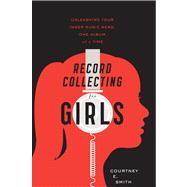
Note: Supplemental materials are not guaranteed with Rental or Used book purchases.
Purchase Benefits
What is included with this book?
| Record Collecting For Girls | p. 1 |
| Top Five Lists | p. 5 |
| Where Have All The Girl Bands Gone? | p. 25 |
| interlude. My Scrobble, Myself | p. 43 |
| Making Out With Romeo And Juliet | p. 47 |
| Guilty Pleasures | p. 67 |
| The Smiths Syndrome | p. 85 |
| Interlude: Give It to Me For Free | p. 101 |
| Are We Breaking Up? | p. 103 |
| The Next Madonna | p. 110 |
| Interlude Music Blogs Are Just Dadaist Conversation | p. 139 |
| Our Song, Your Song, My Song | p. 143 |
| The Death Of The Record Collector | p. 157 |
| interlude: Adventures In Second Life | p. 173 |
| Rock 'N' Roll Consorts | p. 179 |
| Beatles VS. Stones | p. 197 |
| Final note Down The Music K-Hole | p. 213 |
| Acknowledgments | p. 225 |
| Table of Contents provided by Ingram. All Rights Reserved. |
The New copy of this book will include any supplemental materials advertised. Please check the title of the book to determine if it should include any access cards, study guides, lab manuals, CDs, etc.
The Used, Rental and eBook copies of this book are not guaranteed to include any supplemental materials. Typically, only the book itself is included. This is true even if the title states it includes any access cards, study guides, lab manuals, CDs, etc.